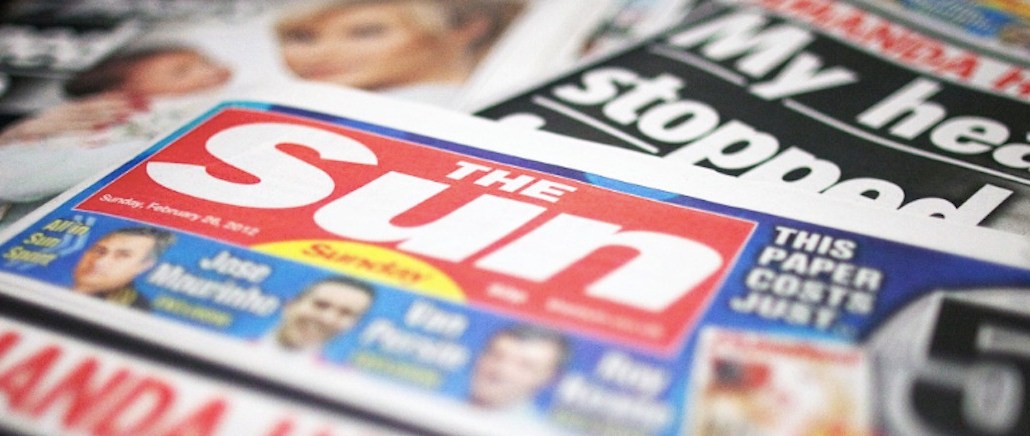
The Sun, liberated last November from its paywall, is having a coming-out party for its video.
The News U.K.-owned title can shoot for scale today in ways that it couldn’t before, and so it is actively embracing the distributed model: Not only is it pushing video across its own site, but fans of the tabloid can watch its content on YouTube, Facebook and, soon, Snapchat Discover.
“In five years time, I want News U.K. — The Sun and The Times — to be as well known for its video content as for its newspapers,” said Derek Brown, head of strategy at The Sun.
The Sun’s investment in video actually dates to the paper’s pre-paywall era. In 2013, the rationale was that if they were going to be charging readers for content, it had better be high quality. The problem was that it’s hard to justify spending money on something that was only open to a small audience.
Today, 70 percent of The Sun’s articles have some video component. Increasingly that video will live off-site, too: On The Sun Video Facebook page, which has 150,000 likes, and The Sun’s main Facebook page, with nearly 2.2 million likes. The tabloid will use that large social readership to encourage growth on its other, newer Facebook pages over the course of the next month.
These will include new Facebook pages such as Cooking, featuring food videos; Motoring, for car enthusiasts; and The Sun Life, which will feature lifestyle and feature stories. It’s a tactic that’s been successful for other publishers as well, notably BuzzFeed, which has launched Tasty, a food video feed, and Nifty, video DIY fare, that live exclusively on the social network.
“I want 100 verticals eventually, but first we need to do these three really well,” said Brown. “Goal one for me is to grow the Facebook Video page, then grow verticals at the same time. It’s not going to happen overnight.”
It has an in-house team of nine, plus numerous outsourced agency contributions, most notably from The Smalls, a video network which connects brands with independent video makers, putting out 10 pieces of original content a day.
The Sun is already posting videos to its Facebook video page that will ultimately live on the dedicated pages. This video, which shows how to make an Emoji Poop cake, has had 230,000 views since publishing on April 19. It will move to its cooking vertical. This video on men trying to put on eye liner, with 136,000 views since April 13, will live on The Sun Life.
The benefit is focusing the huge Facebook audiences into more specific, and therefore more easily targeted audience pools. The Emoji Poop video was posted to The Sun’s main Facebook page too, which The Sun can leverage to give videos a boost. But it saw more engagement (comments and likes) on the dedicated Facebook video page, because of a more focused vertical.
Now that The Sun has returned to an ad-funded model, being able to drive revenue through video is a must. Brown said a main driver for the video verticals is to appeal to advertisers and brands who want to sponsor videos.
The Sun’s Video Facebook page will still house video in the form of thirty second tabloidy news clips: Hulk Hogan’s sex tape, say, or giant rats invading Britain. It will also feature user-generated content and videos tied to events, like Mother’s Day or the Queen’s birthday.
It has just begun experimenting on Facebook Live, too, with two videos under its belt, one on Geordie Shore star Vicky Pattison, the other with opera singer Katherine Jenkins. It will continue posting several Live videos a week. “The more live and raw it is, the more people like it,” said Brown. “You don’t have to spend a fortune on it, which is great; otherwise, we’d all be bankrupt.”
More in Media

Podcast companies turn to live events to capture growing advertiser spend
The surge in the number of live podcast events in 2025 reflects a broader shift: advertisers are betting bigger on podcasts — not just as an audio channel but as a full-fledged creator economy play.

Media Briefing: ‘Cloudflare is locking the door’: Publishers celebrate victory against AI bot crawlers
After years of miserably watching their content get ransacked for free by millions of unidentified AI bot crawlers, publishers were finally thrown a viable lifeline.

How Vogue could navigate potential industry headwinds as Anna Wintour — who agency execs say made ad dollars flow — brings on new edit lead
Anna Wintour’s successor at Vogue will have to overcome the myriad of challenges facing fashion media and the digital publishing ecosystem.





